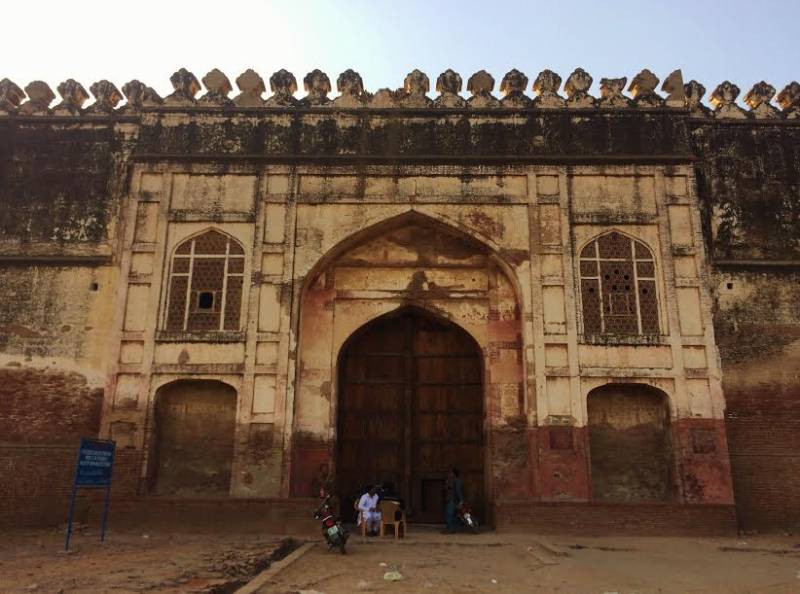We were making our way through busy roads of Sheikhupura. Out of the curve of a road, the scene widened and mighty walls and bastions of Jahangir’s Fort came into view. This seventeenth century monument is closed for public due to its extremely precarious condition. Its caretakers were quite tough nuts but one of us who carried out negotiations with them was a tough nut cracker, and the locks of the only gateway to the fort were opened for us.
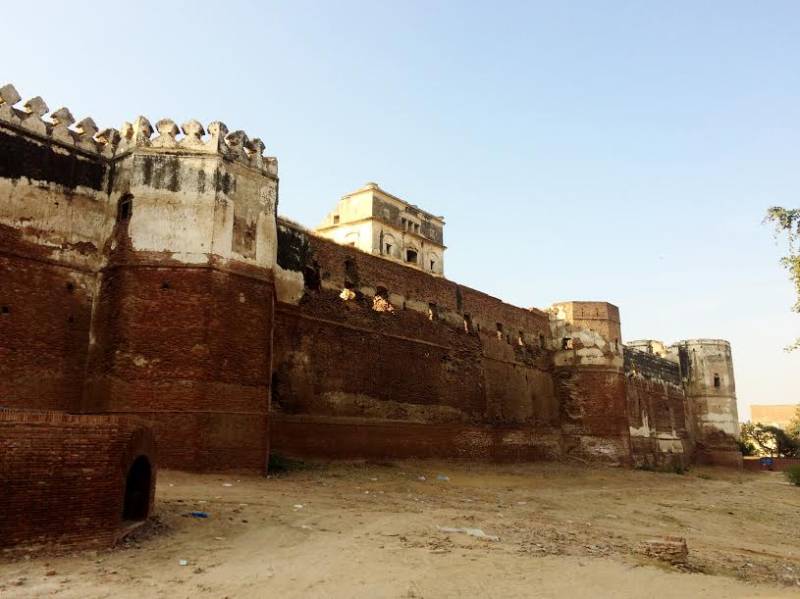
Walls and bastions
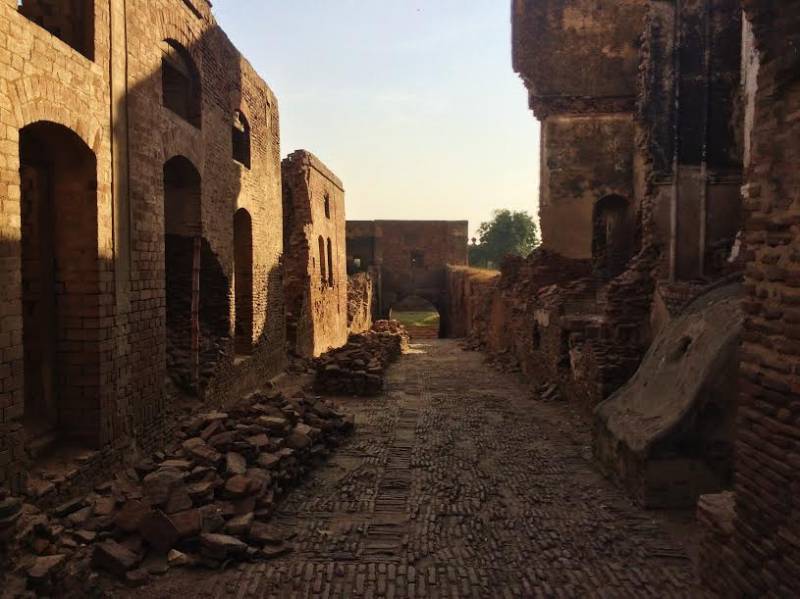
Ruined British era quarters
It is believed that the fort of Sheikhupura was built during the time of Emperor Jahangir alongside Hiran Minar complex. It was Emperor’s camp during royal hunts. Today, only structures surviving from the Mughal era are mighty walls, bastions, the gateway and inaccessible basements in the north western part of the fort which were personally used by Jahangir and Shahjahan during their stays at the fort. During the time of anarchy which spanned for nearly the entire eighteenth century between the Mughal and Sikh eras, the fort changed hands between many war lords until it was taken by Maharaja Ranjit Singh who gave it to one of his senior wives Datar Kaur as her personal residence. Datar Kaur built herself a palatial mansion inside the fort in which she resided until her death in 1838. She was also the mother of Ranjit Singh’s heir Kharak Singh. Following the Maharaja’s death in 1839, two of his sons and a grandson ascended the throne of Lahore and were killed in quick succession within four years. Finally, his youngest son, five year old Duleep Singh was proclaimed Maharaja of the Sikh Empire and his mother Jind Kaur became the Queen Regent in 1843. However, following the Sikh defeat in the First Anglo Sikh War, East India Company’s influence increased and its relations with the Sikh royal family deteriorated. The turning point came in 1847, when following a disagreement; the Queen Regent Maharani Jind Kaur was separated from her nine year old son and taken into custody within her own premises inside the Lahore Fort. Later, all her jewels were confiscated and she was confined to the fort of Sheikhupura. She spent ten months in the fort in complete agony and uncertainty before being moved elsewhere. She couldn’t meet her only son for more than thirteen years. Sheikhupura was a brief chapter in her long years of trials and tribulations. In the British era, the fort was used for administrative purposes. Following Partition, the fort held refugees for many years until it was finally handed over to the archeology department in 1967.
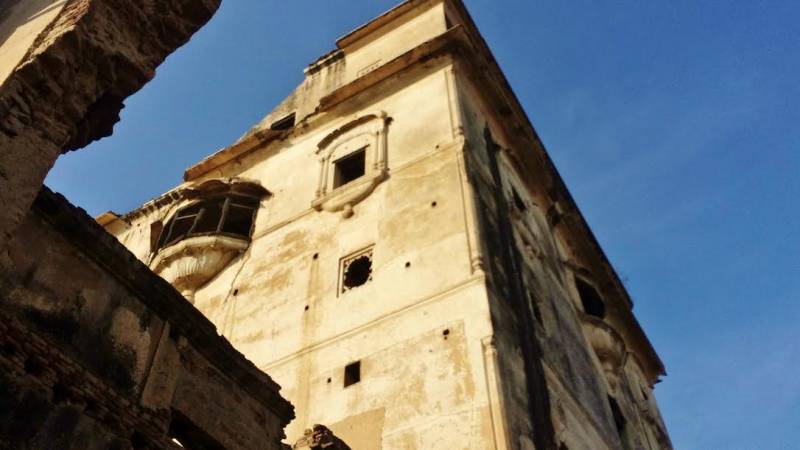
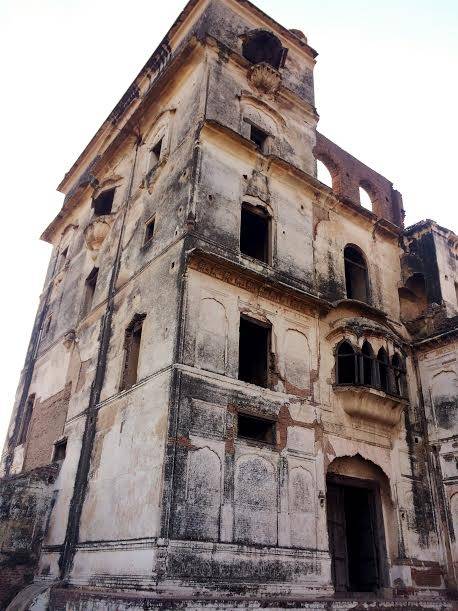
Datar Kaur's Haveli
We stepped in a chamber through a window inside the great wooden doors of the fort. The chamber had two arched openings on either side. We chose the one on our right and after couple of turns found ourselves in a long passage of ruined and partially demolished quarters dating back to early British era, their bricks and rubble piled on both sides. Through a demolished archway, the passage opens into a courtyard which gives access to the mansions dating back to Sikh era. The impressive five storey structure of Datar Kaur’s mansion with its romantic balconies and beautiful outlook stands tall on top of the ruins. It is known for the beautiful fresco paintings on its interior walls, some of which were visible even from the courtyard. Adjacent to this is a partially demolished entrance to a much bigger mansion which is made entirely out of red bricks. The place has a strange feeling of being abandoned and haunted. The staircases were cracked and heavy wooden doors ajar. There were huge cracks in the walls and entire buildings were leaning away from their foundations. Some buildings were partially demolished exposing exquisitely designed inner chambers. Dark balconies, labyrinths of chambers and mysterious staircases descending into basements gave an aura of complete desolation. One word to describe the whole place is doom.
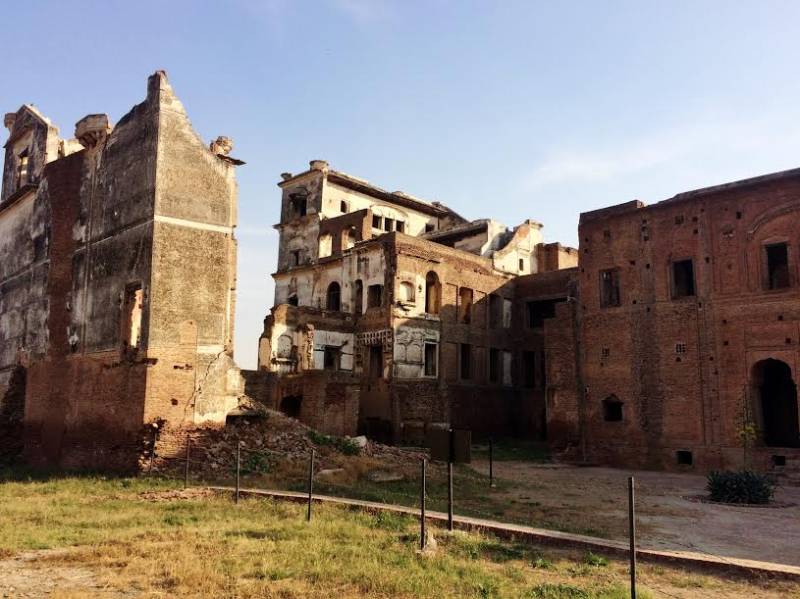
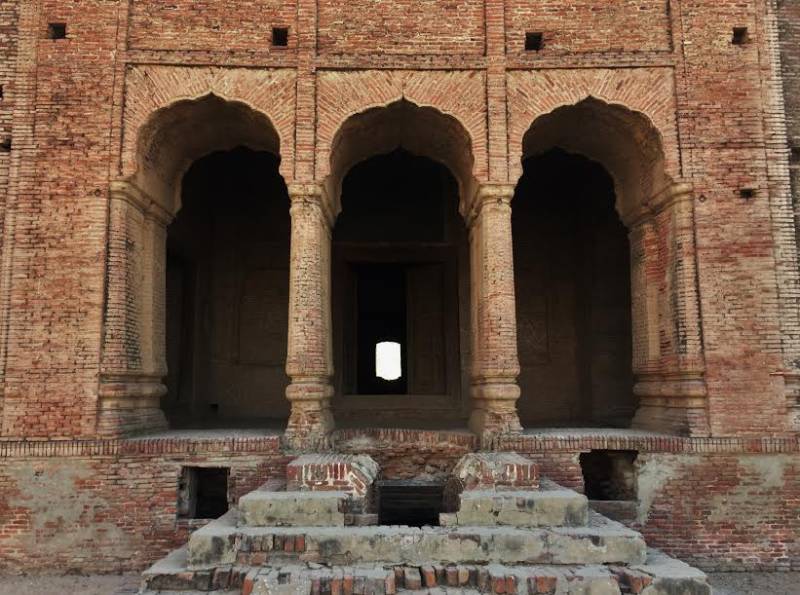
Ruins of Red Brick Haveli
There was a consensus that we won’t enter any building because they are known to be haunted and surely dangerous owing to their precarious condition. For my part, I couldn’t contain my curiosity and ventured a little inside Datar Kaur’s mansion. Its access is through a handsome arched entrance in the courtyard. Soft light from a small window in its entrance chamber illuminated its wall fresco and beautiful wooden balconies, arches and roofs. A dark staircase in a corner led to the first floor. It was at the same time too beautiful and too tragic a sight and had a strange attraction to it. On our way back, I turned around to have a last look at the mansion. My imagination flared up and I pictured the unfortunate Maharani Jind Kaur spending her tragic days of captivity sitting in that great balcony on the top floor, suffering from pangs of separation from her only son. She was a defeated woman who had lost everything and the light of her beautiful youth was turned into a bitter lifelong waiting. At that moment I realized, the desolation of the fort is such an honest reflection of the inner feelings of its last royal occupant.

Maharani Jind Kaur
We walked to the other side of the fort which looked like a vast ground full of overgrown grass and bushes stretching up to the fort wall and bastions. There was a dry well which was much deeper than any I have seen in Lahore. A sign indicated that we were near the Mughal era basements which were extremely dangerous and the visitor shouldn’t take a step towards them. To our surprise we realized that not all of it was the ground. Basement roofs had accumulated thick layers of mud for centuries. Naturally the grass grew over it and now it is difficult to differentiate the roofs from the ground. Bastions at this side of the fort offer a wide view of the town. Stairs inside the bastions also descend into now inaccessible basements.
Sheikhupura Fort is perhaps the most ruined historical structure in Pakistan. It is under the charge of government for the past fifty years, yet not a single effort has been made to protect its priceless structures, some of which I am sad to say have been damaged beyond repair. The fort is in such a ruined condition that some of us might see the end of it in our lives. One strong jolt of earthquake can bring down whatever remains of it. Due to hideous negligence of concerned authorities, this great historical and architectural marvel is as good as lost.

